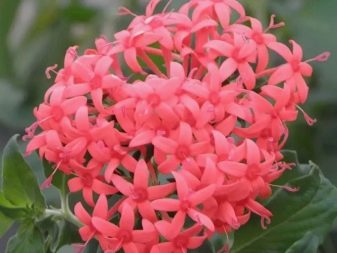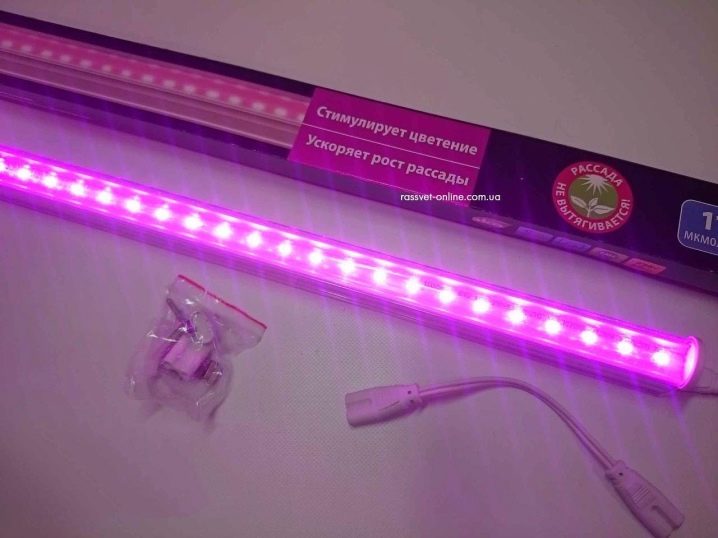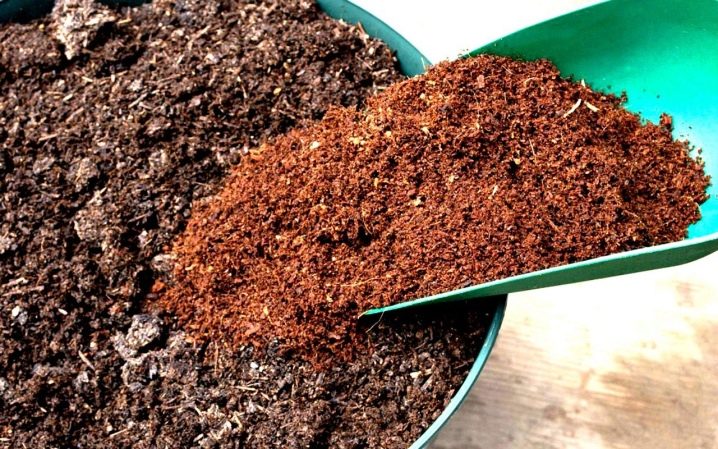Pentas: description, types and cultivation

Pentas or Egyptian star is an extremely beautiful bushy flower of small size. It grows wild in Africa and Madagascar, but it can be grown indoors if desired. How to do this correctly, which varieties are better to choose, we will talk in this article.

Peculiarities
This indoor flower is one of the few that pleases the eye of its owner with a beautiful and abundant flowering in the cold season. This amazing plant blooms profusely, for a long time, bright and colorful, which is why it is often called not only the star of Egypt, but also a bouquet in a pot. The morphological description of the flower is as follows:
- family Madder - evergreen herbaceous or semi-shrub plant;
- in natural conditions, the flowering period can reach 11 months;
- stems are erect, even, their maximum height is up to 50 cm in artificial cultivation; the color of the stems is dark green; branching of lateral shoots is practically absent;
- leaves are oval, thin, smooth, wide; their color is dark green, and the size can reach 6 cm;
- flowers are small, five-pointed, collected in dome-shaped inflorescences; their color can be white, pink, lilac, red or purple.


In indoor conditions or winter greenhouses, only lanceolate pentas are grown. In open ground, it can be planted only at temperatures not lower than +7 degrees.
Therefore, in our country, it is usually grown indoors in pots in winter, and in summer it is transplanted to a garden plot or simply carried out vases with an Egyptian star outside.
In addition to the lanceolate pentas, there are also such types as:
- long-flowered - has small elongated flowers that are collected in rare inflorescences;
- Bussei - these are lush inflorescences, the color of the peduncles themselves is pink with an orange frame; the border of each flower is strongly curved outward.


However, these two species are only suitable for outdoor cultivation. Therefore, they can be planted only in regions where the average annual air temperature does not drop below +10 degrees.
Varieties
Pentas lanceolate has several different varieties, each of which has its own unique characteristics.
- "Starla White" - powerful and beautiful plants. Their maximum height is 45 cm. They have dense inflorescences, in which snow-white five-pointed flowers are collected. They are located on tall stems just above the leaves. This type of pentasa is ideal for growing in a room, a greenhouse, on a terrace or a glazed loggia.


- "New Look F1" - a hybrid with abundant flowering. The flower is compact in size, and its height does not exceed 25 cm. The bush is quite strong, but at the same time harmoniously branched - all the shoots are erect, due to which the pentas itself looks lush and voluminous. The color of the flowers can be white, pink, lilac or red. This variety is ideal for indoor cultivation, but it can also be displayed outdoors in containers during the hot season.


- "Starla mix" - lanceolate pentas with stems up to 45 cm high. Such a bush is grown in a room, on a loggia or in a greenhouse. He loves abundant watering and high humidity combined with temperatures above +20 degrees. The color of the flowers is lilac, lilac, white and pink. Leaves are wide, oval, dark green in color.The duration of continuous flowering is over 6 months.


- Starla Lavender Shades - This is a powerful plant, the height of which, with proper care, reaches 50 cm. The leaves are powerful, dense, located above large inflorescences, the diameter of which can reach 13 cm. The color of the flowers is light purple. This variety is suitable for both indoor and outdoor cultivation. In the latter case, for wintering, the plant is either covered or transplanted into containers.


- "Graffiti" - This is an annual plant, the height of which does not exceed 35 cm. The type of branching is basal. The inflorescences are located high above the leaves, the color of the flowers themselves is lilac, purple, white or red. These plants are grown in rooms, flowerpots on balconies or loggias, as well as outdoors when the weather conditions are right.


- Starla Deep Rose - it is a bushy and powerfully developed plant, the height of which reaches 45 cm. The flowers are small with pointed edges, their color is deep pink. They are collected in powerful inflorescences up to 12 cm in diameter. This variety is suitable for growing as a balcony, pot or flower bed plant.

Such an abundance of various varieties of Egyptian roses allows you to choose the best option for decorating and improving both the indoor flower garden and the personal plot, depending on the goals and desires.
Care rules
In order for a flower to really grow as the manufacturer promises, it must be properly and comprehensively looked after at home.

Watering
Pentas is a plant that is extremely demanding for watering. It should be regular and fairly abundant. But here you should pay attention to the fact that there is no excess moisture - otherwise the root system of the Egyptian star will begin to rot, and it itself will disappear. Therefore, experienced flower growers are advised to irrigate when the topsoil dries up by half a centimeter. Do not use ordinary tap water for irrigation. It should be soft, peeled or settled. Plants should not be irrigated with cold water - only the one that has room temperature. In winter, watering, its frequency and volume are reduced.

Recommended air humidity 60%. To maintain it, an open container with water is installed next to the pentas pots.
Once a week, the plant is sprayed, but only the leaves. If the liquid gets on the flowers, they will start to deteriorate.
Fertilizer
Flower feeding is carried out only during the period of intense flowering. For this, mineral fertilizers are chosen. They are bred according to the instructions and applied directly when watering. Flowers are fed once every 15 days. In winter, fertilizers are not applied - since the plant begins a dormant period.

Pruning
Pentas is distinguished by a very rapid growth of stems, which is why it is very important to maintain its normal growth, as well as its beautiful shape, to regularly form its crown correctly. To do this, those stems that rise above the rest are carefully cut at the root. It is also very important to pinch the tops of the Egyptian star regularly. To do this, the green tops are neatly broken off over the top point of the hardened stem. Both the trimming of the pentas and its pinching are carried out only in the winter.
In addition, it is worth remembering that the optimal temperature for growing a flower ranges from +20 to +25 degrees. The plant needs intense color, but without direct sunlight.
The optimal daylight hours are 16 hours. If necessary, use special phytolamps.

Transfer
The Egyptian star is a very fast-growing plant, so young flowers under the age of 3 years are transplanted every 12 months. Pentas older than 36 months must be transplanted once every 24 months. This procedure is carried out only at the beginning of spring. Each time you transplant, use a new container 5–7 cm larger in diameter than the previous container. New soil is poured, and drainage must be laid on the bottom.

As soon as the diameter of the container in which the star of Egypt grows reaches 20 cm, the transplant is stopped. Instead, the top layer of soil 3–5 cm thick is removed annually and replaced with a new one. Both the transplant and the planting of the plant should be carried out in a special soil. You can buy it both in specialized outlets and prepare it yourself. To do this, mix leaf and turf soils with sand in a ratio of 1: 1: 0.5.

Reproduction
Cuttings
This is a convenient, fairly fast and simple option. Here you can use those shoots that were obtained during pruning or pinching the pentas. The sequence of actions will be as follows:
- young stems are kept in a solution of a rooting stimulator for 45 minutes;
- drainage and soil are poured into a container with a capacity of 200-300 ml, the finished substrate is watered;
- prepared cuttings up to 8 cm high are planted in a prepared container and sprinkled with earth on top;
- for 10 days they are removed in a cool place with good lighting; during this time, the seedling must take root;
- after another month, the pentasa seedling can be transplanted to a permanent place; at this time, the temperature should be about 17 degrees above zero, the humidity should be about 65%, watering is regular and moderate.

This option is easier and faster, since there is no need to follow the crops and dive them in the future. Cuttings of the Egyptian star are carried out only in the spring.
Seeds
Sowing seed material is very convenient because you can sow it at any time of the year. Process reproduction looks like this:
- drainage is poured into the container with a layer of 3 cm, and on top - soil;
- spill the substrate abundantly with warm soft water;
- grooves with a depth of 5 mm are made on the surface of the soil and seeds are laid out in them; they are not sprinkled with a substrate on top;
- after that, the container with crops is removed to a warm place with a temperature of at least 22 degrees above zero and a humidity of about 60%; if necessary, the surface of the soil is abundantly sprayed from a spray bottle;
- if everything was done correctly, the seedlings will appear in 15–20 days;
- in the future, picking of seedlings is required; carry out the procedure when the first 3 true leaves appear in a plant;
- each pentas seedling is planted in a separate container with a capacity of up to 0.6 liters; care is the same as for seedlings obtained from cuttings.


Diseases and pests
Sometimes, when growing an Egyptian star, some problems arise in the form of diseases or pests. But do not despair, you can cope with them on your own. In general, pentas is very resistant to damage by various pathogens. It is worth paying attention to the following diseases:
- nitrogen deficiency and iron cause premature and massive yellowing of leaves and their drying;
- excess salt in the ground leads to the fact that the Egyptian rose practically stops growing and inflorescences do not form on it;
- lack of light it is often the main reason that the pentas grows too high in height, its stems become thin, and the inflorescences are small and thin.

Problems are solved very simply. It is necessary to purchase a special mineral fertilizer with a high content of iron and nitrogen.
And also the plant should be rearranged to another, more illuminated place. If the reason is an excess of salts in the soil, then the pentas must be transplanted into a new substrate.
Most often, the Egyptian star suffers from aphids and ticks. To get rid of these parasites, you should use the following remedies:
- the leaves and stems of the flower are wiped with a soft clothdipped in a 1% solution of laundry soap or warm broth of onion peel;
- use a special complex fertilizer for irrigation; more often the substances that make up it have an unpleasant odor, which scares away pests.


If such methods do not help, then they resort to the help of insecticides. They are bred and used in strict accordance with the instructions.
For information on how to properly care for the pentas, see the next video.
































































































The comment was sent successfully.